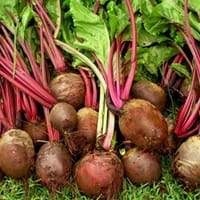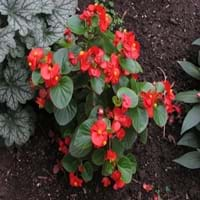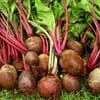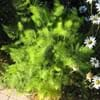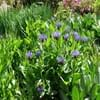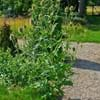Life Span
Biennial
Perennial
Type
Vegetable
Tender Perennial
Origin
Europe
Hybrid origin
Types
Detroit Dark Red Beet, Early Wonder Tall Beet
Ball Red, Bicola, Brandy, Derby
Habitat
Not Available, Unknown
Subtropical climates, Tropical Climate
USDA Hardiness Zone
6-10
10-15
Sunset Zone
A1, A2, A3, H1, H2, 1a, 1b, 2a, 2b, 3a, 3b, 4, 5, 6, 7, 8, 9, 10, 11, 12, 13, 14, 15, 16, 17, 18, 19, 20, 21, 22, 23, 24
H1, H2, 14, 15, 16, 17, 18, 19, 20, 21, 22, 23, 24
Habit
Clump-Forming
Clump-Forming
Flower Color
Red, Green
Pink, Light Pink
Flower Color Modifier
Not Available
Bicolor
Fruit Color
Not Available, Tan
Not Available
Leaf Color in Spring
White, Yellow, Red, Green, Orange, Dark Green
Red, Burgundy, Bronze
Leaf Color in Summer
White, Yellow, Red, Green, Orange, Dark Green
Red, Burgundy, Bronze
Leaf Color in Fall
White, Yellow, Red, Green, Orange, Dark Green
Red, Burgundy, Bronze
Leaf Color in Winter
Not Available
Light Green
Leaf Shape
Spinach Type
Ovate
Plant Season
Spring, Summer, Fall
Spring, Summer, Fall, Winter
Sunlight
Full Sun
Full Sun, Partial Sun, Partial shade
Growth Rate
Very Fast
Fast
Type of Soil
Loam, Sand
Clay, Loam, Sand
The pH of Soil
Neutral
Acidic, Neutral
Soil Drainage
Well drained
Well drained
Bloom Time
Late Spring, Early Summer, Summer
Indeterminate
Tolerances
Not Available
Drought
Where to Plant?
Ground
Container, Ground, Pot
How to Plant?
From bulbs, Seedlings
Seedlings, stem tip cuttings
Plant Maintenance
Medium
Medium
Watering Requirements
Needs watering once a week, Over-watering can cause leaf problems or root diseases, Water Deeply
Do Not over Water, Requires regular watering
In Summer
Lots of watering
Lots of watering
In Spring
Moderate
Moderate
In Winter
Average Water
Average Water
Soil pH
Neutral
Acidic, Neutral
Soil Type
Loam, Sand
Clay, Loam, Sand
Soil Drainage Capacity
Well drained
Well drained
Sun Exposure
Full Sun
Full Sun, Partial Sun, Partial shade
Pruning
Cut or pinch the stems, Prune to stimulate growth, Remove damaged leaves, Remove deadheads
Cut back the foliage when the plants die back naturally
Fertilizers
All-Purpose Liquid Fertilizer
Balanced, soluble fertilizer
Pests and Diseases
Flea Beetles, Leaf Hoppers, Mexican Bean Beetles
Bacterial leaf spot, Blight, Powdery mildew, Stem rot
Plant Tolerance
Drought
Drought
Flowers
Insignificant
Showy
Flower Petal Number
Not Available
Single
Foliage Texture
Coarse
Medium
Foliage Sheen
Matte
Glossy
Attracts
Not Available
Butterflies, Whiteflies
Allergy
breathing problems, dark circles, hairloss, Runny nose, Sore Throat, wheezing
Diarrhea, salivation, Swelling in mouth, Vomiting
Aesthetic Uses
Not Used For Aesthetic Purpose
Borders, Mass in beds
Beauty Benefits
Not Available
Not Available
Environmental Uses
Air purification
Air purification
Medicinal Uses
Diabetes, Digestive disorders, Heart problems, High blood pressure, Inflammation, Unknown
No Medicinal Use
Part of Plant Used
Fruits
Flowers, Leaves
Other Uses
Used As Food
Used for mass plantings
Used As Indoor Plant
No
Yes
Used As Outdoor Plant
Yes
Yes
Garden Design
Bedding Plant, Edible, Herb / Vegetable
Bedding Plant, Container, Edging, Mixed Border, Tropical
Botanical Name
BETA vulgaris 'Early Wonder Tall'
BEGONIA 'Senator Pink'
Common Name
Beet, Early Wonder Tall Beet
Fibrous Begonia, Senator Pink Begonia, Wax Begonia
In Hindi
चुकंदर
Wax Begonia
In German
Rübe
Wachs- Begonie
In French
betterave
Wax Begonia
In Spanish
remolacha
Begonia de cera
In Greek
παντζάρι
Wax Begonia
In Portuguese
beterraba
Wax Begonia
In Polish
buraczany
Wosk Begonia
In Latin
cui pendens sicula beta
Cera Begonia
Phylum
Streptophyta
Magnoliophyta
Class
Caryophyllidae
Magnoliopsida
Order
Not Available
Cucurbitales
Family
Chenopodiaceae
Begoniaceae
Clade
Not Available
Angiosperms, Eudicots, Rosids
Tribe
Not Available
Not Available
Subfamily
Not Available
Not Available
Number of Species
Not Available
Importance of Beet and Wax Begonia
Want to have the most appropriate plant for your garden? You might want to know the importance of Beet and Wax Begonia. Basically, these two plants vary in many aspects. Compare Beet and Wax Begonia as they differ in many characteristics such as their life, care, benefits, facts, etc. Every gardener must at least have the slightest clue about the plants he wants to plant in his garden. Compare their benefits, which differ in many ways like facts and uses. The medicinal use of Beet is Diabetes, Digestive disorders, Heart problems, High blood pressure, Inflammation and Unknown whereas of Wax Begonia is No Medicinal Use. Beet has beauty benefits as follows: Not Available while Wax Begonia has beauty benefits as follows: Not Available.
Compare Facts of Beet vs Wax Begonia
How to choose the best garden plant for your garden depending upon its facts? Here garden plant comparison will help you to solve this query. Compare the facts of Beet vs Wax Begonia and know which one to choose. As garden plants have benefits and other uses, allergy is also a major drawback of plants for some people. Allergic reactions of Beet are breathing problems, dark circles, hairloss, Runny nose, Sore Throat and wheezing whereas of Wax Begonia have Diarrhea, salivation, Swelling in mouth and Vomiting respectively. Having a fruit bearing plant in your garden can be a plus point of your garden. Beet has no showy fruits and Wax Begonia has no showy fruits. Also Beet is not flowering and Wax Begonia is not flowering . You can compare Beet and Wax Begonia facts and facts of other plants too.
